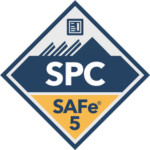Start Your Agile Transformation with Kanban
Start Your Agile Transformation with Kanban
by Patrick Delany
As an IT leader or project manager, you often get asked the question: “How can you help my organization go agile?” or “How can you help our organization improve our systems development lifecycle (SDLC)?”
Sure it is always great to be a part of an organization that is making a full agile transformation with great executive buy-in and leadership, but that is often not the case. In this competitive market, it is crucial that an agile software methodology is implemented to deliver working software faster, learn from our customers and incorporate that feedback into our next iterative release.
Many information technology leaders are forced to live within their own limits of authority and influence in going agile. To break out of these limitations, Kanban is a great way to start. For those of you not familiar with what Kanban is, it is basically a system that helps managers in visualizing workflow to avoid bottlenecks by balancing the requirements of available work capacity with the total demand. The visualization in the Kanban system helps in the process and progress of the workflow from beginning to end.
Even though Kanban came into being in the 1940s by Taiichi Ohno to improve the manufacturing efficiency of Toyota, it has now been incorporated to aid in agile software development. Keep on reading to find out how Kanban works. We will discuss it in steps to make it easily understandable.
1. To start, make a quick board with five vertical swim-lanes. It is best to do this on a big white sheet of paper or a whiteboard to start. Then label each swim-lane from left to right as follows
2. ‘Grooming’ is the work discussed or requested, but not ready to work on (still needs requirements or missing information or a prerequisite not completed).
3. ‘Ready’ to work on, but not yet started.
4. ‘In Progress’, the project or task is being worked on or started and sitting idle.
5. ‘Done’, completed and awaiting acceptance from the customer.
6. ‘Done Done’ is the final swim-lane. This is work that has been accepted as completed by the customer. (Many people call this ‘Accepted’, but I like ‘Done Done’ because it emphasizes that you are not really done until the customer says so.
7. Next, write all your work tasks, projects, initiatives, deliverables, on individual yellow sticky pads and place each in the appropriate column.
Once you have all your work on the Kanban Board, you will likely see you have a very large amount of work in progress. This is not good, but it is normal for most teams starting out with Kanban. The goal is to reduce work in progress and deliver frequently and at a steady flow.
Finally, count the number of people on your team. Write this number in parenthesis (i.e. (6)) above ‘In Progress’ on your board. The goal here is to keep the number of work items to this number in the ‘In Progress’ stage.
To start, this will mean holding more jobs in ‘Ready’ and not starting them until you move enough jobs from ‘In Progress’ to ‘Done’ (and ultimately) ‘Done Done’. Once you do this and stick with it you and your customers will start to see a steady flow of completed work from your team.
This same methodology is applied in agile software to aid businesses and organizations in improving their work efficiency, reduce productivity-killing multitasking and ultimately resulting in faster completion of tasks.
Patrick Delany is a leader in lean-agile enterprise transformational and Scaled Agile Coach/Trainer with over 20 years of information technology leadership and consulting experience. Patrick has transformed technology organizations, programs, and teams across multiple industries and technology disciplines including management services (operations, program, portfolio), applications development, and infrastructure.
Patrick Delany, MBA, SPC5, PMP, CSM, ITIL v3
Senior Lean-Agile Transformation Coach Consultant

